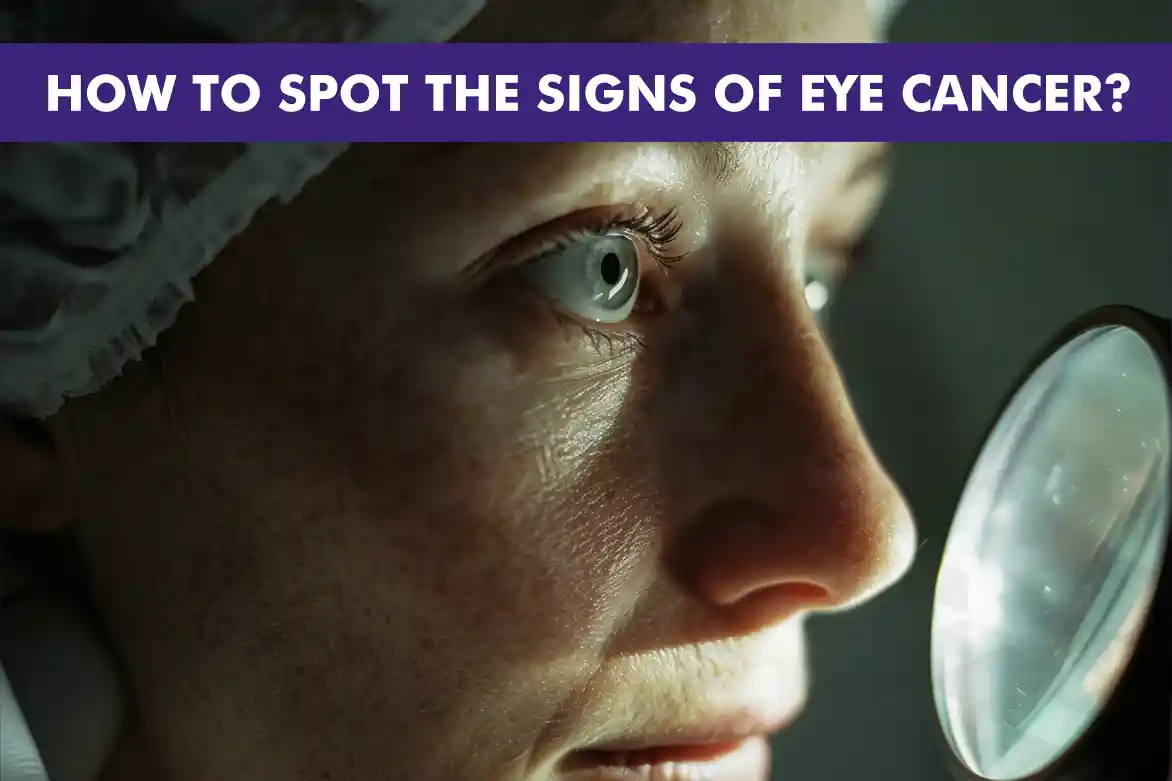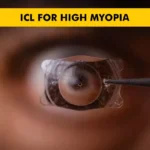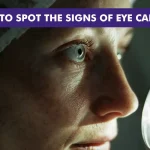Eye cancer, although it is not very common, is a serious medical condition that can result in the loss of vision and even be life-threatening if it is not detected and treated in its early stages. This comprehensive guide is designed to educate you on how to recognize the early warning signs of eye cancer, understand the critical importance of undergoing regular screenings, and learn about the necessary steps to take if you suspect that you may have this condition.
By staying informed and remaining vigilant, you can take proactive and preventive measures to safeguard your vision and maintain your overall health and well-being.
Understanding Eye Cancer: What You Need to Know
Eye cancer occurs when malignant cells develop and multiply uncontrollably within the tissues of the eye, leading to the formation of tumors that can disrupt normal eye function and potentially spread to other parts of the body. This condition can manifest in various forms, as there are different types of eye cancer, each affecting distinct areas of the eye, such as the retina, iris, or the choroid. For instance, intraocular melanoma primarily targets the uvea, while retinoblastoma affects the retina, predominantly in children. Understanding the basics of this condition, including its types and the specific areas they impact, is essential for recognizing eye cancer symptoms and signs. This knowledge empowers individuals to seek timely medical attention, which is vital for managing the disease effectively.
Types of Eye Cancer
There are several types of eye cancer, each with unique characteristics and implications. Notable types include intraocular melanoma, retinoblastoma, and lymphoma. Intraocular melanoma, the most common in adults, originates in the eye’s pigment-producing cells and can cause symptoms like blurry vision, dark spots on the iris, or pupil shape changes. Adults, especially those with light-colored eyes or a family history of melanoma, should be vigilant and have regular eye exams.
Retinoblastoma mainly affects children under five, developing in the retina. Parents should watch for eye cancer symptoms like a white pupil reflection, crossed eyes, or poor vision. Early detection is crucial, as it can be life-threatening if it spreads.
Lymphoma of the eye, less common, often occurs in those with weakened immune systems and can cause redness, swelling, or vision changes. Understanding symptoms and risk factors for each type is essential for early detection and treatment. Being informed helps individuals seek medical advice and intervention promptly.
Common Symptoms and Warning Signs of Eye Cancer
- Blurred vision: Difficulty focusing on objects or seeing them clearly.
- Loss of peripheral vision: Narrowing of your field of view, making it hard to see things to the side without turning your head.
- Dark spots on the iris: Spots that may grow or change over time, indicating potential issues within the eye.
- Flashes of light: Sudden bursts or streaks of light in your vision.
- Floaters: Small, shadowy shapes that drift across your field of vision.
- Change in pupil shape: Irregularities in the roundness or size of the pupil, signaling underlying problems.
If you experience any of these eye cancer symptoms, it’s crucial to consult an eye specialist immediately for a thorough examination.
Importance of Regular Eye Exams and Screenings
Regular eye exams are crucial for early detection of eye cancer, a serious condition affecting vision and health if not caught early. During these exams, specialists use advanced tools to identify abnormalities you might miss. Screenings are vital for catching the disease early when treatment is most effective. Early detection can preserve vision and prevent cancer spread. Annual exams are recommended, especially for high-risk groups like those with a family history or light-colored eyes, who are more susceptible due to less UV protection. Regular check-ups ensure any issues are promptly addressed, maintaining eye health and overall well-being.
Eye Cancer Treatment Options
Treatment options for eye cancer vary based on the cancer type, stage, and patient health. Common treatments include surgery to remove the tumor and possibly surrounding tissue, ranging from minor procedures to enucleation, where the entire eye is removed in severe cases. Radiation therapy uses high-energy rays to destroy cancer cells and can be external or involve brachytherapy, placing radioactive seeds near the tumor.
Laser therapy, a less invasive option, uses focused light to shrink or destroy tumors, suitable for small or localized cancers. Chemotherapy uses drugs to kill cancer cells, administered systemically or locally, depending on the spread. Often, a combination of treatments is tailored to the patient’s needs.
Early detection can lead to less invasive treatments and better outcomes, preserving vision and reducing cancer spread. Regular eye exams and prompt medical attention are crucial for early intervention, improving prognosis and quality of life.
Who Is At Risk?
Age: Increased risk with advancing age, particularly for those over 50, as the likelihood of developing eye cancer rises with age-related changes in eye tissues. Some eye cancers like Retinoblastoma affect infants.
Genetics: A family history of eye cancer or other cancers can significantly heighten risk, indicating a potential genetic predisposition.
UV Radiation: Prolonged exposure to ultraviolet light, especially without adequate eye protection, can contribute to the risk of developing eye cancer.
Eye Color: Individuals with light-colored eyes, such as blue or green, are more susceptible due to less natural protection against UV rays.
Inherited Conditions: Certain genetic conditions, such as retinoblastoma or familial atypical mole and melanoma syndrome (FAMMM), can increase the risk of eye cancer.
Lifestyle Factors: Smoking and excessive alcohol consumption have been linked to a higher risk of various cancers, including those affecting the eyes.
Environmental Exposure: Working in environments with high levels of radiation or harmful chemicals can also elevate the risk of eye cancer.
Steps to Take If You Suspect Eye Cancer
- Seek medical attention immediately if you suspect eye cancer.
- Early action increases the chances of effective treatment.
- Schedule an appointment with an ophthalmologist for a comprehensive eye examination.
- Discuss all symptoms openly, regardless of their severity.
- Accurate assessment by the ophthalmologist is crucial for determining the appropriate course of action.
- Early diagnosis and treatment are vital for a successful outcome.
- Detecting eye cancer early offers more treatment options that are less invasive and more effective.
- Early intervention can help preserve vision and prevent cancer from spreading.
- Prompt consultation with a healthcare professional can significantly improve prognosis and quality of life.
Life After Eye Cancer Treatment
Life after eye cancer treatment can involve regular follow-up appointments to monitor for recurrence and manage any side effects. You may also need rehabilitation services to help adapt to any changes in vision.
Support groups and counseling can provide emotional support and help you navigate the challenges of life after treatment.
Conclusion
Early detection of eye cancer is vital for preserving vision and ensuring the best possible outcome. By understanding the symptoms and risk factors, and committing to regular eye exams, you can take proactive steps to protect your eye health.
Stay informed, stay vigilant, and consult your healthcare provider if you have any concerns about your vision.
FAQs
How Common is Eye Cancer?
Eye cancer is rare, with melanoma being the most common type diagnosed in adults. Retinoblastoma is more common in children but still infrequent.
Can Eye Cancer Spread to Other Parts of the Body?
Yes, eye cancer can metastasize, especially ocular melanoma, which may spread to the liver and other organs. Metastasis typically worsens the prognosis.
What Are the Chances of Surviving Eye Cancer?
Survival rates depend on the type and stage at diagnosis. Localized eye cancers have higher survival rates, while advanced cases with metastasis have lower chances.
Can I Prevent Eye Cancer?
Prevention is challenging, but protecting eyes from UV exposure, maintaining regular eye exams, and promptly addressing unusual symptoms can aid in early detection.
Is Eye Cancer Treatable Without Surgery?
Yes, non-surgical treatments like radiation therapy, laser therapy, or cryotherapy are often used, especially for small tumors or tumors in sensitive locations.
How Can I Detect Eye Cancer Early?
Awareness of symptoms such as vision changes, floaters, and eye pain is crucial, and regular eye exams can help detect issues before they progress.





